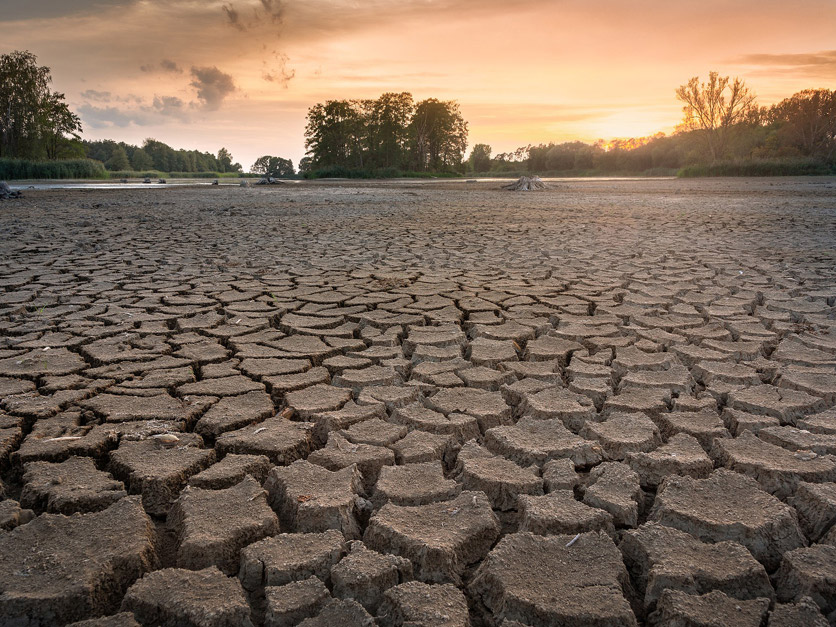Specialty crop growers in Southern California are facing a harsh reality. As climate change draws record heat and erratic precipitation patterns to the region, farmers struggle to find the resources that can translate climate scenarios down to the regional or crop level. While many growers here are already adopting climate-resilient practices, a new CDFA report shows they are eager for scientists and policymakers to close the research gap in climate modeling.
“We really don't have crop-specific information for how bad of an impact these extremes could have,” said Tapan Pathak, a UC Merced specialist in climate adaptation for agriculture, in a discussion on Monday about the report. “Based on that, we could create viable adaptation strategies.”
CDFA partnered with the San Diego–based Climate Science Alliance to produce the report. According to Connor Magee, who leads the alliance effort, agriculture in San Diego County alone is highly diverse, with a large portion of small farms, which sweep across high deserts, alpine landscapes and a Mediterranean climate on the coast. Magee and his team compiled more than 50 in-depth interviews and a survey of more than 150 stakeholders across Imperial, Kern, Riverside and San Diego Counties. They discovered a strong need for more training, on-farm support and analysis of the economic benefits for climate-smart practices.
The report serves as a region-specific update to a 2012 CDFA statewide report on specialty crops. That initiative led to a new CDFA office dedicated to environmental farming as well as partnerships with Israel, the Netherlands, South Africa and Australia and a suite of climate-smart incentives programs aimed at mitigating emissions, adapting to climate impacts and maintaining food security.
In 2019 CDFA secured funding for the follow-up study through a USDA specialty crop block grant and resources through a partnership with the alliance.
The report serves to distill a few of the many climate scenarios down to the regional level. One of the findings is that Southern California will face minimum temperatures much higher than other regions in the state, according to Michael Wolff, a researcher in the CDFA Office of Environmental Farming and Innovation. In the southern San Joaquin Valley, the average number of extreme heat days each year will go from seven today to 30 by 2050, and those days will arrive as early as May and stick around as late as November. By 2100, the number is estimated to double.
The temperature increases in the Sierra Nevada range are less certain but are likely to have significant impacts on agriculture by causing more precipitation to fall as rain rather than being stored as snowpack to replenish reservoirs in summer, said Pathak. Together with other cooperative extension specialists, he found that current studies show heat alone could reduce yields by nearly 30% for some crops — a number likely to be higher if water stress were factored in as well. The amount of time to reach maturity for processing tomatoes, for example, could shrink by three weeks — crippling a sector where California leads the nation.
Climate models show less certainty over whether the amount of annual precipitation overall will drop, according to Wolff. Rainstorms will be more intense, raising flood risks, and springs will be much drier. Yet the patterns will vary wildly from year to year. This presents challenges not just for surface water supplies. Current strategies to mitigate the heat effects on crops often involve more irrigation, which relies on more water availability.
Farmers must grapple with other trade-offs as well when switching to more heat- or water-tolerant crops or to commodities with higher market values that can offset the rising cost of water. Each crop responds to climate and weather differently.

Tapan Pathak, a cooperative extension specialist for climate adaptation in agriculture at UC Merced
“When we are thinking about adaptation research, we really need to be looking at the crop-specific and region-specific issues,” said Pathak.
Another climate challenge is a reduction in the number of frost days, which allows pests and diseases to survive longer and spread further. Currently, almond and walnut growers in just one or two counties are facing a climate that is highly conducive to navel orangeworms by allowing them to complete five cycles of growth.
“By end of the century, almost the entire valley is going to experience the fifth generation of navel orangeworm,” Pathak said. “And there is a huge impact, especially if it hits during the net production or harvest time frame.”
Warming temperatures are also leading to more insects and weeds migrating into and across the state from other regions. To combat this, Pathak said, integrated pest management should be a priority in this region, along with the means for adopting these practices.
“The growers [in the survey] mentioned that we need better tools to measure the effectiveness of these practices, and better tools to implement these practices,” he said.
The report will help researchers develop new outreach tools that offer more IPM options aimed at specific growth stages for insects, which would reduce the frequency and amount of pesticide spraying in the process, he said. Farmers can also play a central role in developing software that more intuitively integrates climate projections into regional risk assessments for certain crops.
CDFA and UC Agriculture and Natural Resources have been ramping up their extension efforts for adaptive practices as well. A partnership between the two organizations in 2018 created 10 positions for education specialists in climate-smart agriculture at the county level. They encourage growers to apply for incentive funding through the CDFA programs. Kern County education specialist Shulamit Shroder said the water efficiency grants have been “extremely popular” here, helping farmers convert to drip irrigation, purchase soil moisture sensors and replace diesel pumps. But she acknowledged the process is competitive and growers outside of overdrafted basins, such as Imperial County, tend to lose out on those grants.
Interested in more coverage and insights? Receive a free month of Agri-Pulse West.
The CDFA programs are also facing funding shortfalls this year as the state’s cap-and-trade revenues are in steep decline. The Legislature and Gov. Newsom are negotiating changes to the market that could generate more revenue in the future.
The governor has signaled strong support for the Healthy Soils Program particularly, and the department is planning to expand its partnerships on this front as well. The report serves as both a valuable resource for grower feedback and a policy paper for lawmakers in support of climate resiliency practices.
“This is what I hope is the first of many regional efforts to listen and hear from farmers and ranchers throughout California on what we are doing now and what we need to do to prepare for and adapt to a changing climate,” said CDFA Secretary Karen Ross.
For more news, go to www.Agri-Pulse.com.


